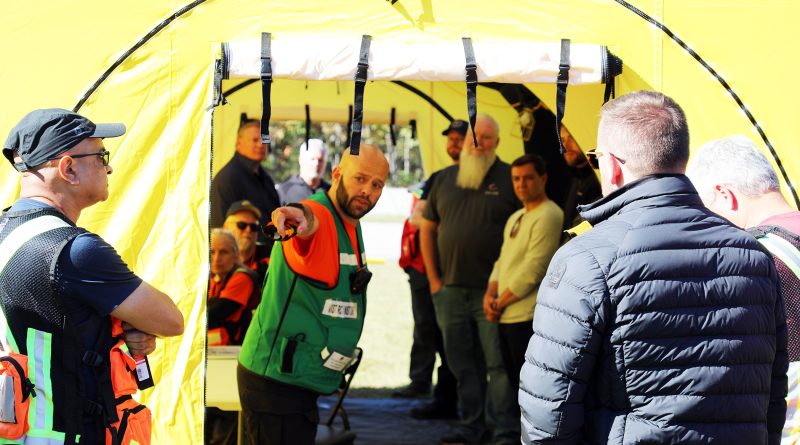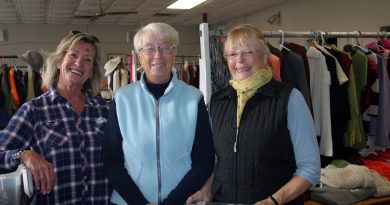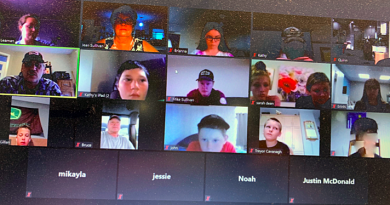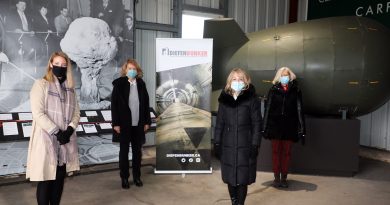SARVAC trains in Constance Bay
By Jake Davies - West Carleton Online
CONSTANCE BAY – The Search and Rescue Volunteer Association of Canada (SARVAC) returned to Constance Bay all day Saturday (Oct. 5), but this time it was only a drill.
While many Constance Bay and other West Carleton residents will remember SARVAC volunteers assisting during both the 2018 tornado as well as recent extreme flooding in West Carleton, this time close to 200 members of the 9,000-volunteer strong organization came to Constance Bay to make sure those life-saving skills are honed to perfection.
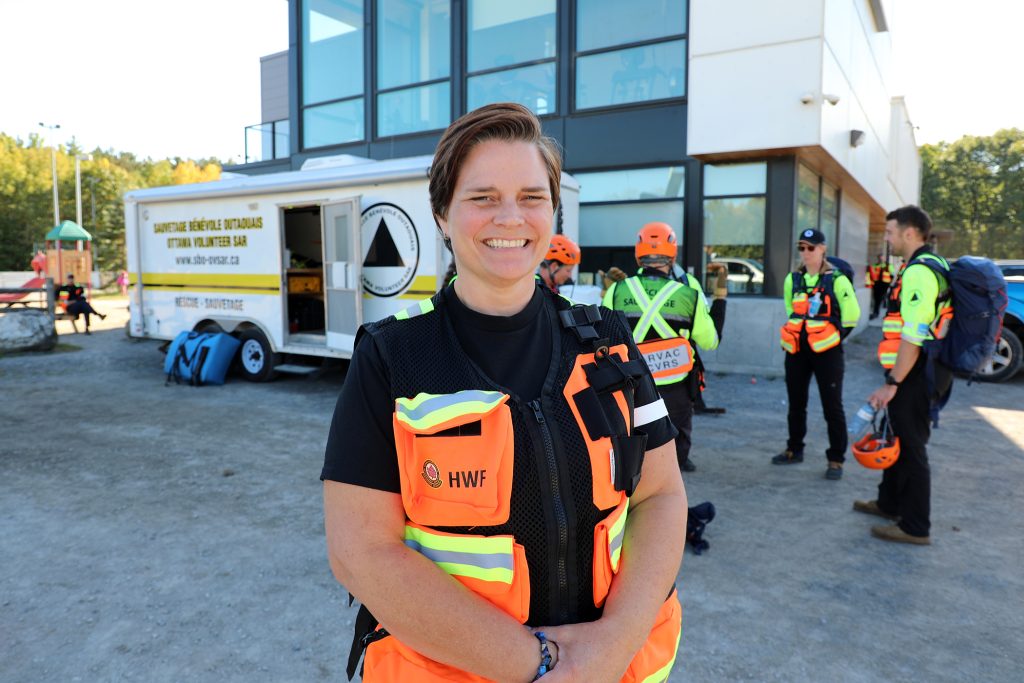
With help from the Constance and Buckham’s Bay Community Association (CBBCA), SARVAC hosted a full-scale exercise in Constance Bay known as Effective Impact 2024.
“Effective Impact 2024 is set to showcase the preparedness and emergency response capabilities of SARVAC’s Humanitarian Workforce (HWF) in managing both natural and human-induced disasters,” SARVAC communications officer Scott Yan told West Carleton Online. “This exercise will feature dedicated ground search and rescue volunteers engaging in simulated disaster relief operations, including setting up a base of operations, an incident command post, and field activities.”
Established in 1996, SARVAC is a registered not-for-profit and educational organization that supports, coordinates, develops, informs, promotes and implements search, rescue and emergency response with the underlying principle of saving lives.
Members from every province and territory came to Constance Bay to take part in the exercise. But of course, 200 volunteers is a small percentage of the 9,000-strong organization.
SARVAC humanitarian workforce operations coordinator Nicolas DeBreyne told a group of exercise observers including Ward 5 Coun. Clarke Kelly, City of Ottawa emergency preparedness staff and members of the Ontario Provincial Police, strategies and operations are designed so the organization does not need to have all 9,000 members in one place at one time.
“We have to design our systems so simply, we can give instruction in the field and have them up and running in short order,” DeBreyne said from a tent set up to be a base of operations during the exercise.
“We can’t get all 9,000 in one spot for training,” SARVAC liaison officer Lawrence Conway said.
The SARVAC team is able to outfit up to 100 volunteers in short order, including communication and rescue capabilities in short order to anywhere in Canada. Tents have heating capabilities for winter work, and all SARVAC equipment can fit on a small Cessna airplane for transportation.
For the sake of the exercise, SARVAC members were descending on Constance Bay after a hurricane had touched down, followed almost immediately by a “surprise” tornado. While that luckily isn’t an incident that has occurred in West Carleton yet, with one tornado and three extreme flooding events in recent history, it’s not exactly unimaginable either.
As the exercise neared completion, SARVAC President Janelle Cuoltes took time to speak to West Carleton Online about the exercise and the organization.
Coultes is an Ontario Provincial Police certified search manager and has volunteered with a number of search and rescue organizations over the years before taking SARVAC’s top position.
“SARVAC represents 300 ground-rescue volunteer teams across Canada,” Coultes said. “We have put together what is called our humanitarian workforce, basically working together with other non-government organizations such as the Red Cross, Salvation Army, and St. John Ambulance. SARVAC’s part in this is we want to be ready for any type of emergency management event. Things like tornadoes, or floods, or hurricanes or fires or anything like that. We have members from across Canada that are here today (Oct. 5) doing a simulated event, so if we did all have to respond to an emergency, we can all come together from different parts of Canada and be able to adapt and respond to that emergency.”
Coultes says there are about 180 volunteers talking part in the Constance Bay exercise.
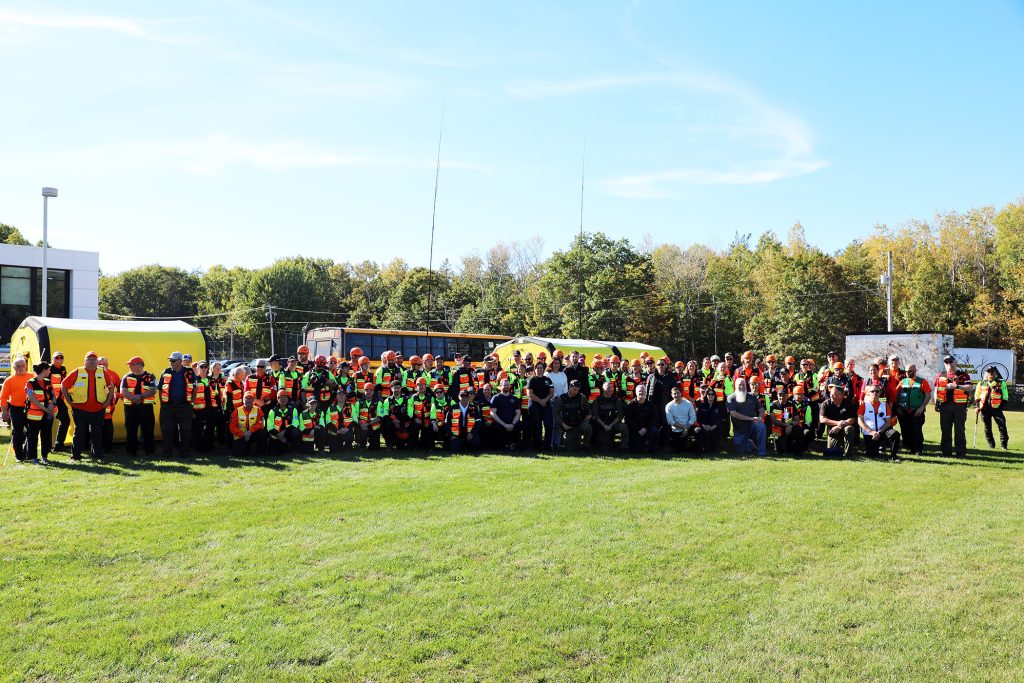
“We have about 110 that are out actively in the field,” she said. “And then a number that are here supporting in other capacities. The majority are from around here, Ottawa, that are always training in this area, the West Carleton area.”
Many of those volunteers have spent time in West Carleton in recent years.
“Just think about that multiplied by what can happen across Canada,” Coultes said. “So, we want all our teams across Canada to be able to respond in that same we. We do have representatives from every province and territory here.”
Although all the members can’t be present for this exercise, they all do continuous training throughout the year.
“All of our members are training to a national standard that we have,” Coultes said. “That’s something that is a Canadian Standards Association (CSA) standard. It’s been in progress for 10 to 12 years. It’s a huge undertaking to get something like national certification for something like search and rescue. We have accomplished that, so we have that capability, and all our members and their competencies because of things like that. But we also want to make sure when we’re coming together from different parts of Canada, we can easily adapt to whatever is happening on the ground, so those members can speak the same language when it comes to the response.”
Coultes says the hurricane and “surprise” tornado response is not farfetched, as that is something millions of people in the southern United States are facing in the wake of Hurricane Helene touching ground recently.
“On a beautiful day like today, it’s not going to look like actual hurricane weather,” Coultes said. “But that’s the scenario.”
Coultes says SARVAC can work well in concert with professional emergency crews organized by municipalities.
“A lot of times, we’re called the boots on the ground,” she said. “We’re the ones who will go out, sometimes we’re helping with traffic control, sandbagging, sometimes just the physicality of things that need to be done. A lot of times we’re integrating in to the structure of what needs to be happening. If we’re working together with any organization, if it’s the police, fire department, the City of Ottawa, any provincial entity, we know how to integrate with them, so on scene we can seamlessly work together.”
Coultes says SARVAC attracts a type to its ranks.
“A lot of members are starting because they want to help the community,” she said. “A lot of young members are interested in getting in to things like policing, fire, paramedics, that sort of thing, because we do encompass all of that and it’s really relevant volunteer experience. Then we have a lot of our longer-term members who come from backgrounds of being in the army or some sort of related field, police, that sort of thing. So, we have all ranges from young teenagers to retirees and everything in between. A lot are just looking to give back to their community.”
SARVAC doesn’t just respond to large-scale emergencies, but also individual searches when called upon.
“We’re doing those all the time,” Coultes said.
Coultes says one of the strengths of SARVAC is its ability to quickly mobilize.
“We have a tiered response,” she said. “With teams that are closest to the area. In that case it might be 24 to 48 hours to get people on scene and we can branch out from there.”
Coultes says exercises like this one are important for the organization.
“We hope when this wraps up everyone gets the sense we can work together even though we from all over,” she said. “Even though we have those individual team names, when we’re all a part of SARVAC, that’s when we know we can all work together.”






